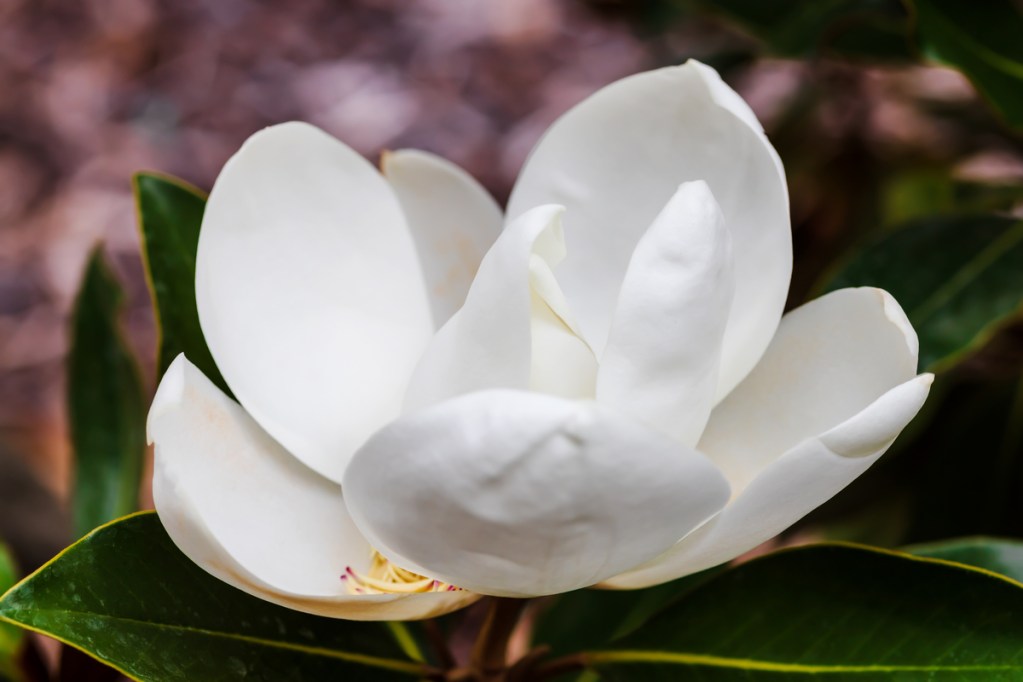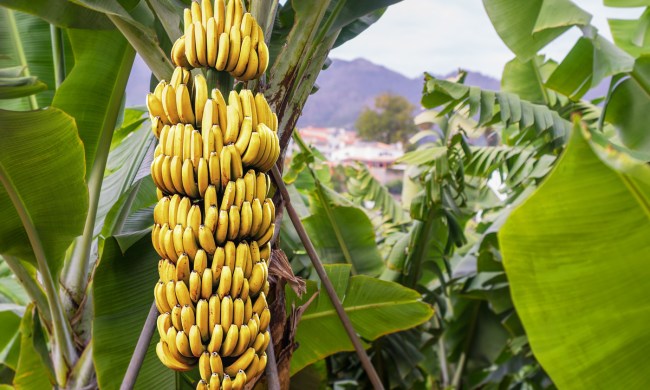
Magnolias are beautiful, long-lived trees and have many wonderful species. Although they’re well known throughout the South, magnolia trees can actually grow anywhere. There is a magnolia tree for any garden or lifestyle, from dry weather to cold weather, big to small, and with a wide variety of flower sizes, shapes, and amounts. These stunning flowering shrubs and trees will look lovely in your yard. No matter what type of magnolia you’re looking for, one of these six is sure to be a good fit. Here are our six favorite magnolia tree and shrub species for you to try.

Star magnolia
Star magnolias are stunning shrubs or small trees with white or pink flowers. They are among the hardiest magnolia species, being resistant to cold, as well as pests and diseases. However, it’s not a drought-tolerant tree. This magnolia species is most suited for zones 4 through 9, and it’s among the earliest blooming magnolias. You can expect to see tons of flowers in early spring or occasionally even in late winter! Although not the smallest magnolia species, they are relatively small, growing to between 15 and 20 feet tall. Star magnolias can grow in containers, but they may require extra pruning to keep them smaller.

Southern magnolia
Southern magnolias are tall, with glossy leaves and creamy white flowers. Native to the American Southeast, these magnolia trees can be found in cultivated gardens and wild forests alike. Southern magnolia trees prefer rich, loamy soil, but they are also tolerant of heat and drought. These magnolia trees bloom heavily in late spring to early summer, followed by pretty but inedible red fruits. These fruits are loved by birds, making them a perfect choice for birdwatchers’ yards. Southern magnolia trees are a long-term investment, as they are slow growers and can take roughly 10 years to mature enough to flower.

Jane magnolia
Jane magnolia trees are a hybrid species, created for their beautiful flowers. This magnolia tree species begins blooming in spring and continues throughout summer, with tulip-shaped flowers that come in shades of pink, purple, and white. Jane magnolia trees are fairly small, typically ranging from 10 to 15 feet tall, and can grow in containers. They are also cold tolerant, hardy in zones 4 to 8, and have a moderate tolerance to drought. This makes Jane magnolias a great fit for the Upper Midwest. Additionally, Jane magnolia trees grow flowers before they grow leaves each year, creating a unique display of flowers on leafless branches.

Saucer magnolia
Saucer magnolia trees are perfect for flower lovers, as they are one of the magnolia species with the largest flowers. Their flowers are 3 to 6 inches wide on average, but they can grow up to 10 inches wide. In addition to their flowers, the rest of the saucer magnolia tree is large as well. Saucer magnolia trees can grow up to 25 feet tall, and they have a large root system, so take care not to plant them close to structures or other trees. Saucer magnolias bloom in mid to late spring, and their flowers are cup- or bowl-shaped and come in pink and white. While saucer magnolias are not prolific fruiters, they do produce a few fruits after blooming. These fruits are inedible, but they’re attractive to wildlife.

Banana shrub
Don’t let the name fool you; the banana shrub is actually a magnolia tree. Magnolia figo, sometimes called Michelia figo, gets its name from the subtle banana scent of its flowers. This smaller shrub magnolia species only grows to be 15 feet tall and can be kept smaller through careful pruning. This makes it excellent for containers and greenhouses. It blooms in dark purple, yellow, or creamy white. While the banana shrub is not particularly cold tolerant, it is drought tolerant and slightly salt tolerant, and it does well in southern coastal regions. High winds can damage banana shrubs, so you may need to plant yours near a windbreak or in another sheltered location.

Bigleaf magnolia
The bigleaf magnolia is a large magnolia tree species with, as you might expect, massive leaves. These leaves can be as long as 30 inches — that’s 2 1/2 feet! The flowers are typically quite large as well, ranging from 8 to 10 inches, rivaling the saucer magnolia’s flowers. These magnolias are native to the U.S., but are relatively uncommon in the wild. Their flowers are typically white, although pale yellow and pink varieties can be found. Bigleaf magnolia trees begin flowering in late spring to early summer, but they typically do not bloom until they are around 12 years old. They also produce fruit that is similar to the fruit of southern magnolias.
One of these six magnolia trees and shrubs would make a great addition to your yard or garden, providing shade, flowers, and many other benefits to your yard’s ecosystem. No matter which one you choose, you’re sure to be happy with the stunning sight of these trees and shrubs. Whether you’re looking for a magnolia tree species that can handle your climate, will fit in your yard, or just has plenty of flowers, these six are a great place to start.



